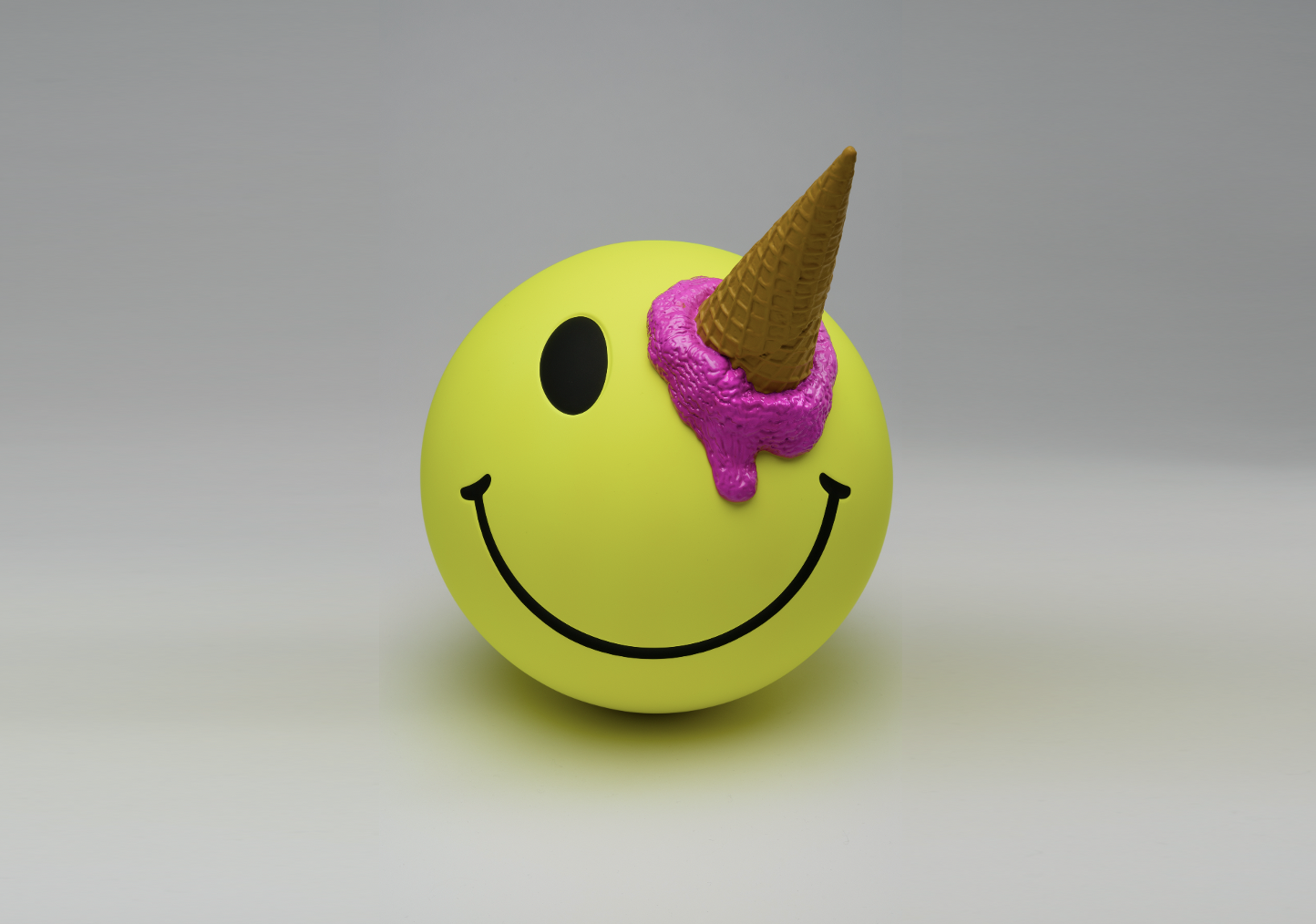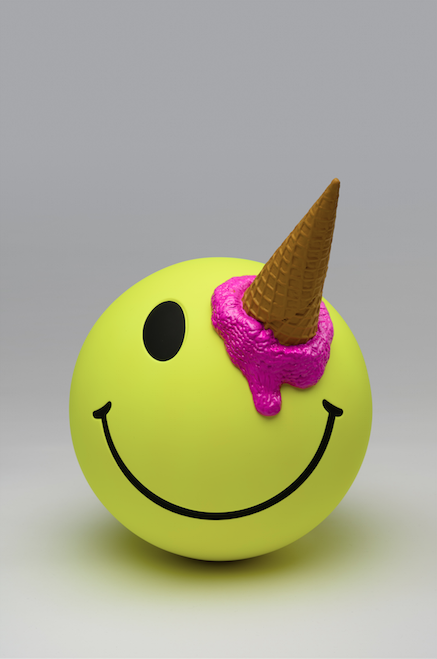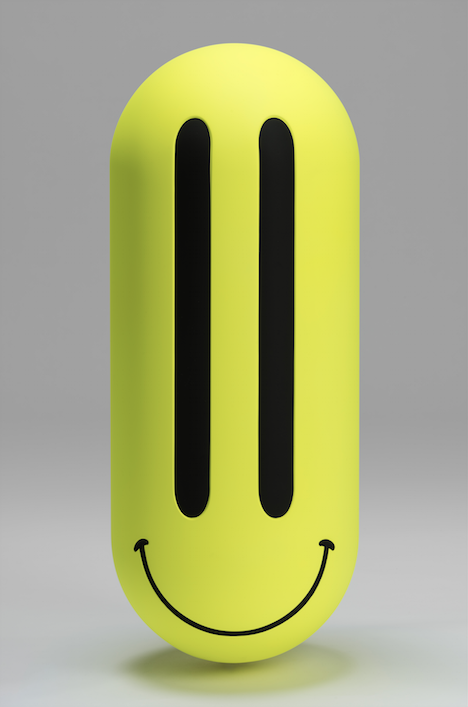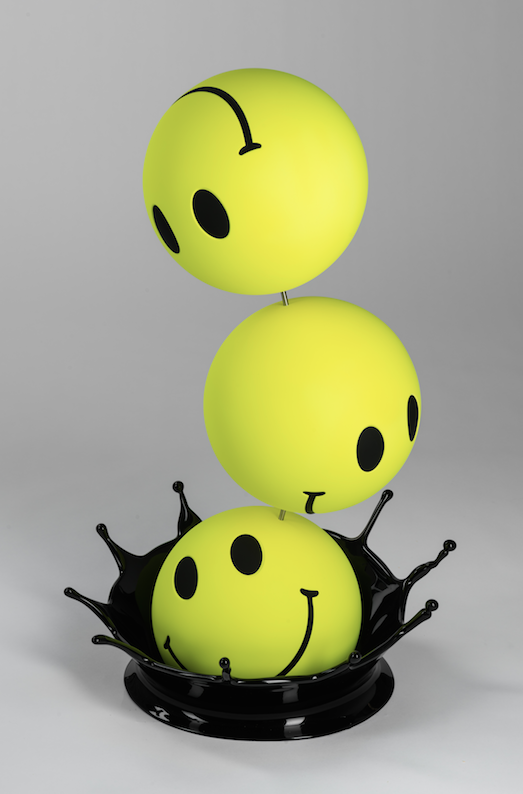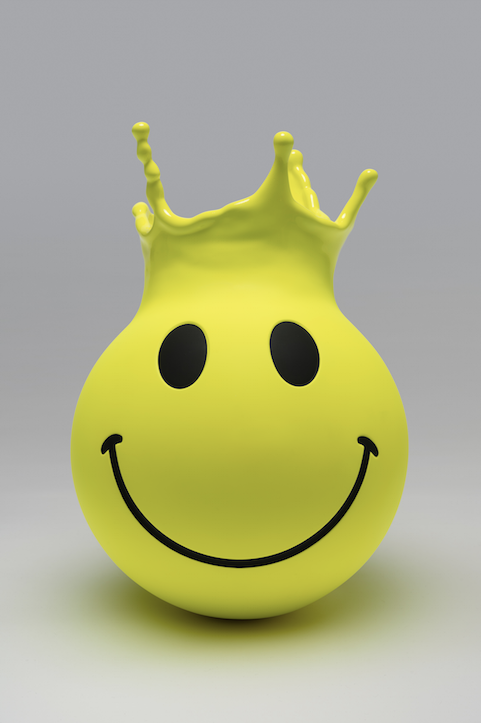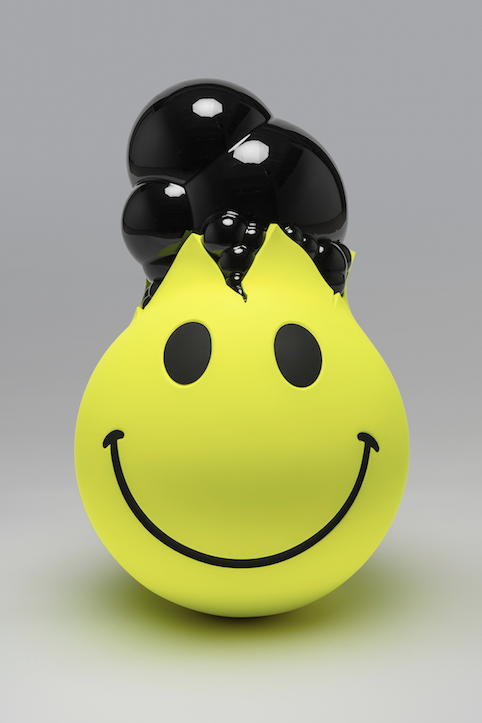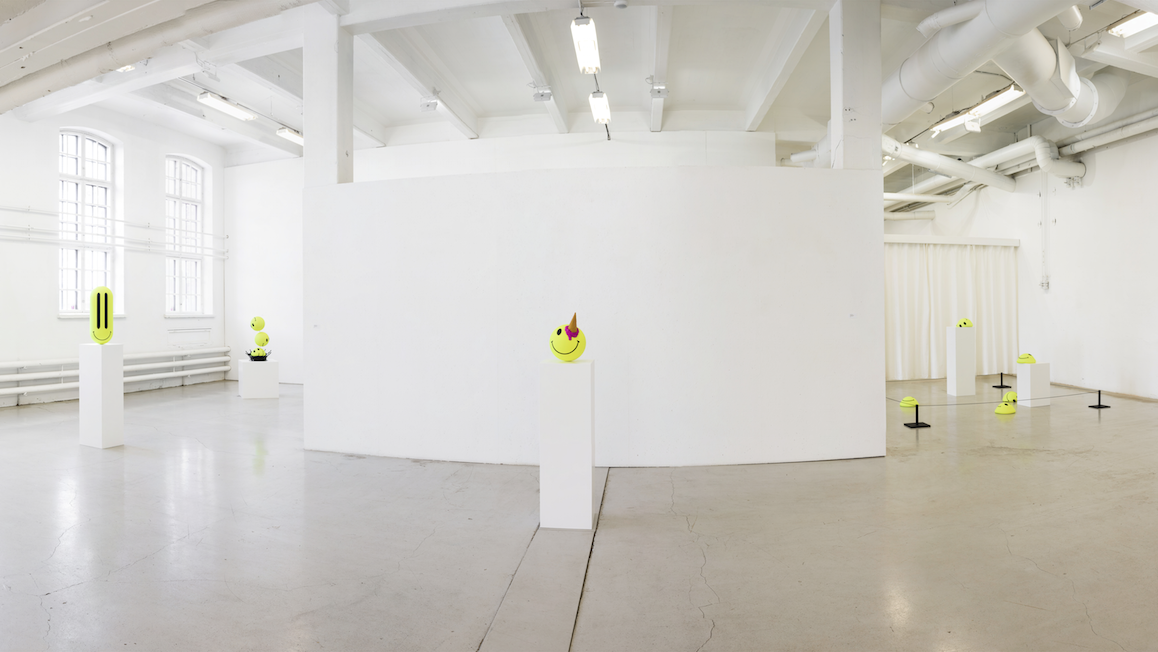”I want to make art that is at once timeless and topical”
The expression of a Smiley is a broad smile always expressing the same overwhelming enthusiasm. A Smiley face expresses joy, encouragement, approval. It symbolises everything positive, although when simplified, the message functions mostly as an encouraging punctuation mark – as such, it is simultaneously the most pointless and the most meaningful in the world.
The three-dimensional, cast-aluminium sculptures of Jiri Geller’s new series have been inspired by the classic Smiley face. Geller continues to present detailed, expertly-crafted sculptures by offering yet another perspective into his conceptual nihilism. The sculptures’ pattern of events that appears to have halted for a fraction of a second is known from Geller’s previous work, and the latest series of works is no exception; the hyper-finalised forms of the sculptures stretch, empty, bubble, splash, move mechanically, and the smiley face gets an ice-cream cone in the eye.
Smiley usage is global, it is a cross-cultural image whose positive message has lived on in different forms, from cave paintings to today’s smart phones. Geller’s sculptures do not, however, depict the smileys that have evolved into emojis, although their ubiquitous presence has played a part in the birth of the work. In written sources, the first symbol interpretable as a smiley can be found already in the 1600s. From then on, different versions are occasionally observed in different sources, although increasingly from the mid-1900s onwards. The classic yellow Smiley face, made famous by popular culture, is based on a symbol developed in the US in 1963, with the aim of encouraging improved achievement among employees of a life-insurance company. This has become part of the standards of today’s working life; employees are given warnings ever more lightly, if they don’t remember to smile enough.
“Remember to smile, it’s nice to look at a smiley face!”
Geller’s chosen topics often consist of objects or situations based on something that has become iconic. Geller sees Smiley as an example of this. Like balloons, skulls, or escalators, they are not located in time, but are simultaneously both topical and timeless.
Jiri Geller (born 1970, resides and works in Helsinki) is known for his highly detailed sculptures that utilise current phenomena in pop culture. Geller has held several notable solo exhibitions around Finland and the Nordic countries, as well as taken part in numerous exhibitions in international art institutions around the world.
